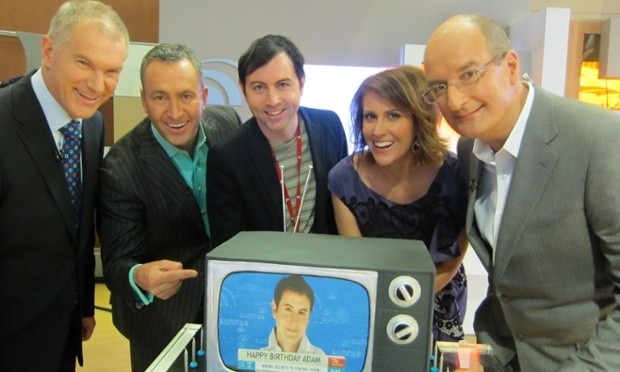If you want to have something featured on breakfast television, it requires an entirely different approach than any other media outlet or program. The content, timing and audience are unique and to get even close to having your business, event, concept or angle considered, you need to understand how breakfast TV works.
Adam Boland, Former Executive of Sunrise and creator of The Morning Show and Weekend Sunrise, has recently released his book, Brekky Central, which takes you behind the scenes of Australian breakfast television.
The book (besides being an enthralling read) gives a good summary of the standard breakfast TV format:
Every good breakfast show has some key ingredients. The first is a news update every thirty minutes. And it can never be late. Time-poor viewers use them as signposts. They expect to see the headlines at 7am, for example, knowing they’ll still have time to catch the seven-fifteen bus to work.
The second is big interviews – be they with newsmakers or entertainers. Celebrities tend to get pushed to later in the show, in the hope viewers will stick around to watch. The average person tunes in for less than fifteen minutes, so, for ratings-hungry producers, every extra minute counts.
And the third is a less formal presenting style than that of, say, the 6pm news. Most people want to start the day with a smile and will simply switch off if things get too serious (with the exception of days when big news is breaking).
Any media coverage that you have the possibility of securing on a breakfast television shows needs to fit in with this format and be exciting and visual enough to capture the interest of its time-poor audience.
Our two golden rules of media relations are true for breakfast television:
- If you help the right people get what they want, you are more likely to get what you want. In the case of breakfast television, if you help a producer by making their job easier and giving them the kind of content that they want, then you are more likely to get the media coverage you want.
- Do not waste a journalist’s time. This includes wasting their time by showing you are not familiar with their media outlet and audience. If you pitch a story that obviously does not fit with the program’s format, tone, audience or story types, then you are wasting both your time and the journalist’s time (and making a bad name for yourself).
This does require effort and good strategy, but it certainly pays off when your business is featured on breakfast television and is seen by hundreds of thousands of Australians (up to 2.5 million people a week are tuning in at some point).



